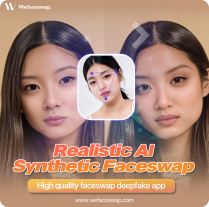How Face Swap Technology is Transforming Photo Editing
How Face Swap Technology is Transforming Photo Editing
Blog Article
Top 5 Face Swap Apps to Try Today
The transformation of face change engineering from a unique novelty to a main-stream trend is nothing in short supply of fascinating. Originating as a great filtration on early picture apps, face trades have today become an important element of social media marketing content development and also qualified industries. With its rapid development and rising reputation, deepfake technology has fascinated thousands worldwide. Programs like Face Trade have performed a major role in that phenomenon, offering sophisticated and revolutionary experience swapping techniques which are easy to use.

Deepswap is really a cutting-edge deep understanding technology which allows for high-quality experience trades with just a few clicks. It employs artificial intelligence (AI) methods to analyze facial characteristics and easily change them with yet another person's. It has opened a world of creative possibilities, letting consumers to generate jaw-dropping aesthetic results and distinctive content. Let's examine some of the fascinating projects you can make with Deepswap.
The Early Times of Experience Change
Face change technology first appeared in the first 2010s with basic photo-editing apps. These early iterations were usually clunky, producing humorous but glitchy effects that fueled their charm solely as entertainment. Users would exchange people with friends, animals, or even celebrities, sharing these hilarious photographs on social media marketing platforms. While simple, this entry-level technology exposed the doorway for designers to examine its untapped possible further.
Development Forced by Cultural Press
Quickly ahead to the mid-2010s, and the rise of applications like Snapchat and Instagram catapulted face swaps into conventional culture. The thing that was after restricted to static pictures was today being altered in to real-time video filters. FaceSwap, Snapchat's iconic lens, became certainly one of its most popular features, engaging millions of customers daily. Reports claim that by 2016, roughly 60% of Snapchat consumers had attempted its face trade feature at the very least once.
Simultaneously, social networking influencers began adopting experience trades for content development, heightening diamond through creativity and humor. That rising development more cemented the technology's presence in popular culture, planning beyond entertainment and emerging as a robust software for storytelling.
Sophisticated Engineering and Broader Applications
Nowadays, breakthroughs in synthetic intelligence (AI) and device learning have increased face trade resources, making them more precise and genuine than their predecessors. Deepfake technology presents the cutting-edge realm of face swapping, allowing hyper-realistic overlays of just one experience onto another. Beyond amusement, qualified fields like filmmaking, advertising, and even electronic training have embraced these innovations.

As an example, in 2021, studies indicated that almost 15% of digital marketers were tinkering with AI-driven video personalization applying advanced face swaps. That change demonstrates how face exchange engineering is crossing in to realistic programs, encouraging its climbing popularity.
A Development on the Increase
What makes experience swaps evergreen is their convenience and adaptability. Thanks to mobile-friendly apps driven by AI, anyone can test out experience swaps without complex expertise. Whether for lighthearted enjoyment or professional use, the expansion of the engineering implies extended growth.
From its modest beginnings as a photo-editing novelty to their modern-day applications in AI and marketing, face trade engineering has evolved remarkably. With more advancements on the horizon, that tendency is defined to keep up their popularity for years to come.
Report this page